Top 10 Tips for Starting a Blog and Making Money
Setting up your blog is an excellent way to promote yourself and share your thoughts and opinions online. Blogs are free, simple to update and customise, and can be built upon to have them exactly how you want in the long run.
You’ve got a great idea for a blog post, or maybe you have an interest that’s always been begging to become a full-blown blog. You may have grown tired of reading other people's work. Or perhaps you just want to know how to make money blogging. No matter what your reasoning is for being here today, know that starting a blog is exciting — even downright thrilling. You can build an income-generating machine from something as small as a hobby. But it will take some work — especially if you’re new at blogging.
Blogging is one of the oldest ways to make money on the internet. There are plenty of websites where you can write about topics that interest you (or someone else) and earn money from those articles, whether you're a writer, photographer, videographer or blogger.
And since we all love lists:
Here are ten tips for starting a blog and making money from it:
Table of Contents
Your Host and Server Matters
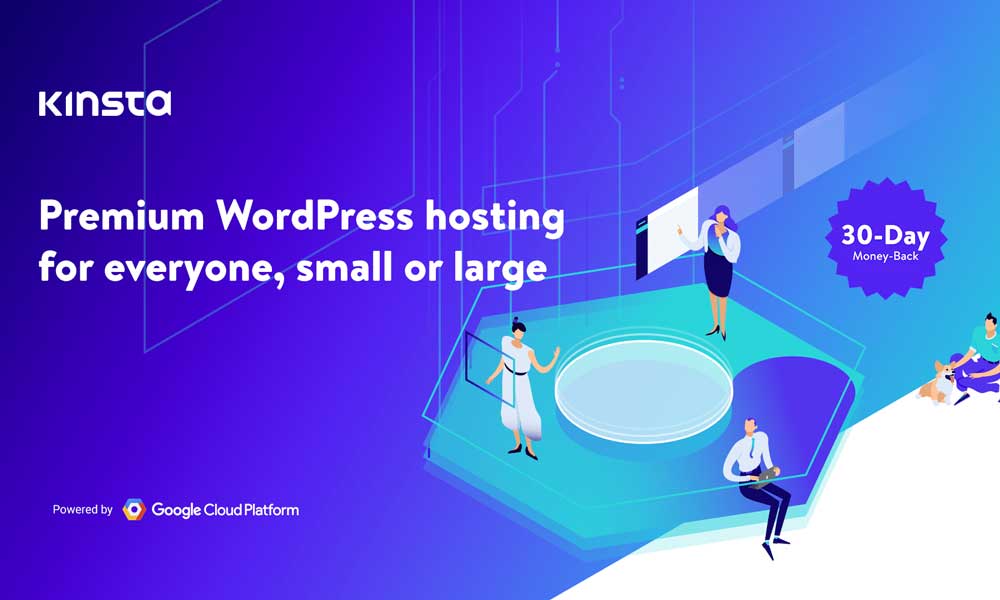
Blogging platforms are different, with some offering little to no support and others being more complete.
Starting, it’s clear that choosing the right platform can impact your ability to communicate with your audience. If you combine design and features effectively, you’ll be able to reach more people and get them interested in your site.
However, it’s not only about looks. Reliability is just as crucial if you want to grow an online presence.
What Does the Speed of a Hosting Service Mean?
Let’s look at two scenarios:
- A blog hosted on a high-speed server with consistent uptime;
- A blog hosted on a slow server that often crashes
In the first scenario, Your host's speed can be vital for engaging your audience. With fast loading times, they’ll love visiting. But what if they don’t like something? Will having a slow site hinder their ability to share posts or leave comments?
You never know, so always go with reliability over everything else. The best hosts will support critical technologies (such as PHP and WordPress) and easy management systems, costing less money than others.
What About Server Speed and Uptime?
If your web hosting company has superb help and is easy to manage, you should be okay with it. What you ought to worry about more is the server speed and uptime. Your website should load quickly; visitors should be able to access your pages and use your services.
Server speed and reliability are also critical because they affect user engagement. If a site is slow or down, individuals will lose interest rapidly. Fewer visits mean fewer people visiting and leaving comments on your blog, which could hurt your stats.
Then again, if a site goes here and there sporadically, this can be essentially baffling for our perusers – also, the way that such issues make it impossible for the generally voluminous stream of traffic to stream easily.
Indeed, even with the best hosting plan, your traffic could be smaller than it should be. To scale up your blog, you need a dedicated server with more storage space and an extra-large database, among other specialised assets.
What Are the Best Hosting Plans?
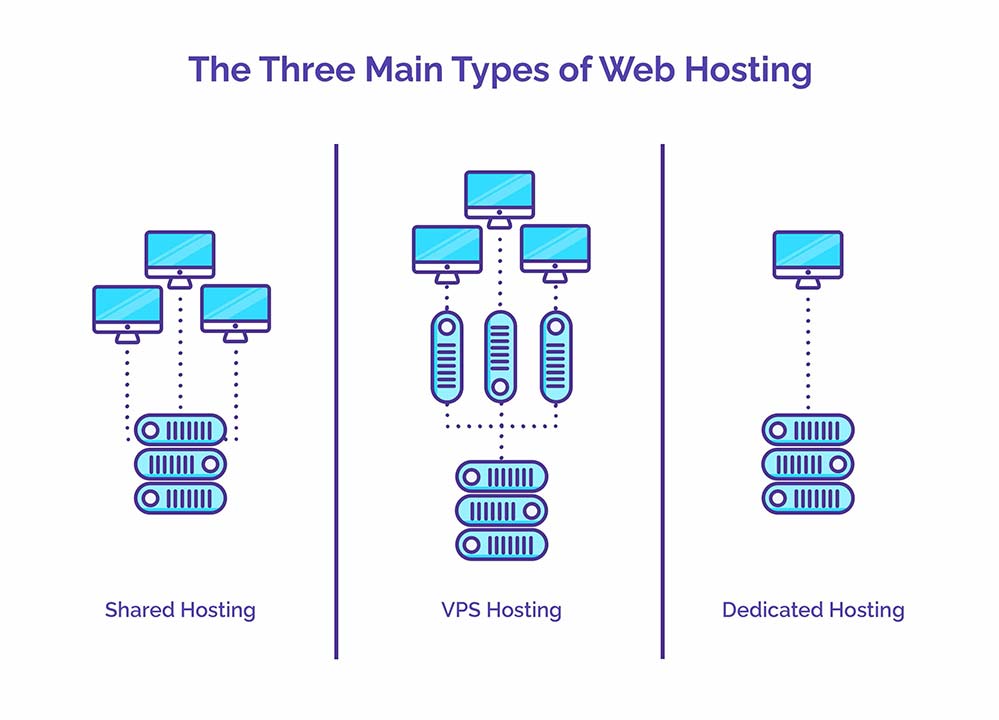
For bloggers, there are three main types of hosting plans. You will receive different services and features depending on the plan you choose. The pricing for these plans will change based on how many websites and domains the client hosts. Suppose you begin with a managed WordPress hosting plan. In that case, that’s best if you already have a website and blog set up, as they usually come packaged with several features that make managing your site easier.
Free Hosting
Paid hosts include limited storage space, bandwidth, and email options. This means users can only use the advanced features the paid hosting plans offer. Extra space must be purchased if more space is needed to store media. Free hosts limit the number of domain names or email addresses people can host.
Self-Managed WordPress Hosting
Self-managed hosting provides free features that freemium gives out, but no one will help monitor it for them. This means those clients must always know what's happening on their server, so they must install plugins and update WordPress regularly. Having someone monitoring your server helps you out a lot.
Managed WordPress Hosting
If clients pick this option, they can focus solely on blogging about whatever they want without worrying about updating their site or even the site’s host itself because a squad of experts takes care of all that other stuff. This peace of mind makes this type more expensive than self-managed or free plans.
How to Find the Right Hosting Plan
The first thing you need to do is figure out what features and services you want. People have different needs when it comes to this. Some want free hosting; others are looking for an entire option. Consider these questions to help you figure out which hosting plan is best for your needs:
- Do I need a lot of storage space?
- What about bandwidth?
- Emailing options?
- Do I need an easy-to-use website builder?
- How important is a site backup service to me?
- What specific resources should they offer for my blog?
- Should I host with multiple domain names or just one?
- Does my blog need to be mobile-responsive?
- Would I like a commenting system available on my blog?
- What about email marketing software or a contact form? Do those interest me?
- Do I want a content management system to manage all these pieces in one place?
- Is there a way to get more information about the providers before deciding which one to go with?
Domain Names
There are two main types of domain names: Personal and business. You also have .com,.org,.net, etc.
Personal domains are usually easier to find but much less desirable. This is because personal domains make monetising your blog hard, if possible and will likely result in fewer search engine results.
If you’re wondering where to register them, it’s free on most – but remember that each plan has its limit. For example, the lowest number could include five or ten domains, while higher-end plans may allow more than that- Make sure you check in advance!
Set Up Google Analytics From Day One
Analytics help you know where your visitors come from, what pages they read and what they click on. The traffic source, geographic location, and browser type you get with Google Analytics will help you optimise your site and keep it relevant.
Why you need Google Analytics
Google Analytics is a tool that allows you to track the actions of visitors to your website. This information helps you understand how people find your site, what they're looking for and where they come from. If your readership is mainly in one city, then you know where most of them are coming from.
Knowing the number of visits to each page on your site allows you to track the popularity of particular posts, figure out which ones need work, and make necessary adjustments. You can also see where people are clicking on your site so that you can better layout and content those pages. Optimising will increase conversion by focusing marketing efforts on successful landing pages.
By tracking these statistics, these data will help guide a more targeted readership for yourself. Furthermore, Google Analytics lets you measure how many readers you’re reaching and whether they effectively convert into committed readers.
Setting up GA4 Add-On
The easiest way to install Google Analytics to your WordPress site is with GA4 Add-On. It only takes one click to install this plugin without writing any code.
Once installed, open this plugin option and select enable. From there, a new page should load, guiding you through all the steps of setting up an analytics account for your site. You’ll start by entering a domain name and password, followed by a brief questionnaire asking what kind of blog you have (and which template) and what type of visitor traffic you want.
After completing that section, options will be given below for customising the data you want to include, such as date range, language, country keywords, etc. After adding the first site's desired data options, another “create new” button will appear to add more sites.
Finally, you will need to use the shortcode if you want to set up your analytics page rather than on your blog. Create a page with the same domain name as your blog and enter the shortcode [ga] into a text box.
A tracking pixel should be added to that page, meaning Google Analytics has started collecting data. You can view your stats at the top of the page, which states the location of visitors (how many people visit your site from different countries) and see the traffic source in the dropdown menu, which can help determine why traffic is coming from certain places.
Another feature Google Analytics offers is setting up multiple domains on one account. In the upper right-hand corner is an option called “Views/Impressions.” Clicking this opens another window showing the total views and impressions of the website.
You can even determine which pages are most popular and have garnered maximum clicks. Click the “Add Account” button at the top of the page to set up multiple accounts, then click the link for the account you want to track.
The subsequent display will show you the settings for that account, including importing and exporting data options.
Afterwards, you’ll be redirected back to your home page, where you can use analytics to measure your success.
Create a Great Publishing Process at the Outset
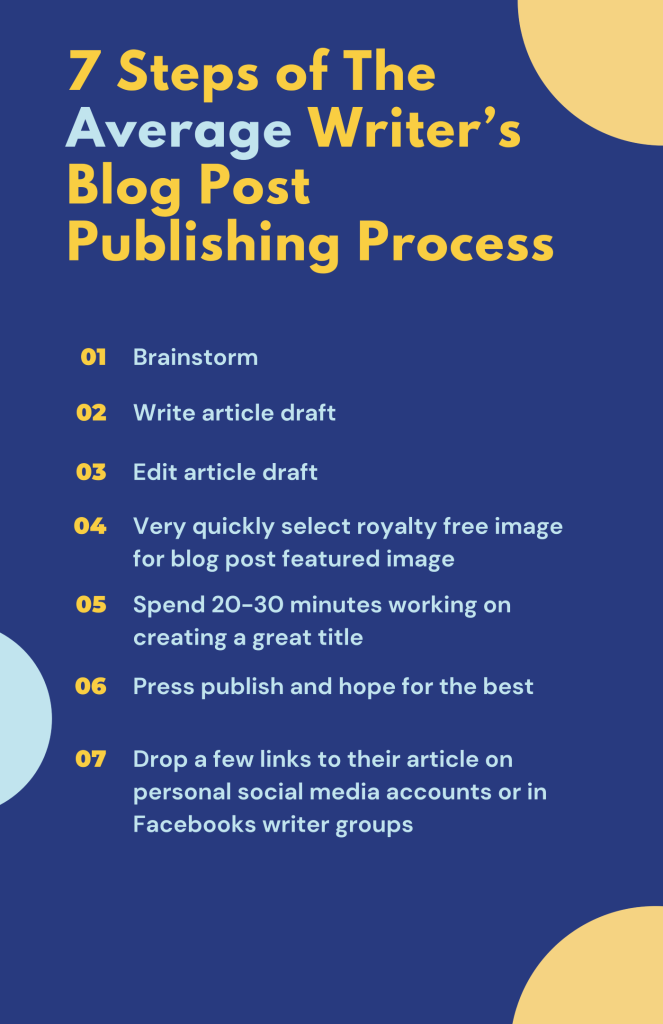
Having a solid publishing process at the start will lay the groundwork for future success.
In other words, if you start a blog and have a great publishing process in place from the get-go, you'll have more chance of ongoing success and more significant potential than if you leave it to chance or only put your writing into action once the project is complete.
How do you start a blog with a good publishing process in place?
Here are five things to consider before you begin:
- What's the point of your blog? What do you want to achieve through it?
- How will you publish?
- Who is your ideal reader?
- How will you monetise it?
- What content will you produce?
Make sure there is a clear purpose behind your blog so that instead of blogging just for blogging's sake, there’s meaning behind what you're doing and why. You can find out how to choose your blog purpose here.
You should also be clear about the purpose of your blog and who it’s aimed at.
Before embarking on any writing project, it’s essential to know who your audience is so that whatever message or product you’re promoting is tailored directly to them. You can find out how to choose your target audience here.
Once you’ve decided what to write about and whom it’s for, choose how exactly you’ll get these posts into people’s hands (or eyes).
Will you write them yourself? Or hire freelancers or full-time writers? Learn how to save time by finding out how many words are on each page — including headers — so that when planning out articles later on, this knowledge simplifies rather than complicates things.
Once again, having an excellent publishing process at the outset will ensure that years later, when different people have taken over producing content for the said site, results continue as they did in those early days.
Pick a topic which has the potential to make money while captivating an audience and increasing sales.
Accompanying a clear idea of what you want to say and who you’re saying it to, you’ll need to have a solid publishing process to ensure attracting this audience is possible.
If your goal is to turn blogging into your full-time income, note that it will probably take some time before your blog gains the traction it needs. So don't be too hard on yourself if you don't take off immediately.
Instead, use the above steps to build something you're proud of over time.
Make Sure You Understand SEO
There's no question that SEO can be confusing, but there are ways to use it effectively. Here are three reasons why you need to understand the basics:
- You'll know if you're getting traffic and where it originated.
- You'll know how to write articles that rank well.
- You'll know how to drive targeted traffic to your site.
Let's take a look at each of these benefits in greater detail.

What is SEO?
In the universe of search engines, SEO stands for Search Engine Optimisation. It’s a term used to describe what you do to your website so that it’ll appear in search engine results pages (SERPs) when someone types in a query.
But what does that mean?
When it comes down to it, search engines are just answering machines. They scour their index of the web to see what’s there. Then, they bring back the most relevant pages for your query.
Think about it this way: when you’re searching for something, you aren’t interested in seeing the same thing repeatedly, right? Google knows this, too, so its algorithm could have a mental breakdown if it assigns a single ranking for every web page.
Instead, they look for content that’s similar but also different. And if they’re going to pick up your “beef jerky blog” as a result every time someone searches “bacon,” then your blog isn’t beneficial… so Google won’t show many people your page.
The bottom line? You want to ensure you write great stuff and network with other SEOs who create great stuff, too.
That being said, here's how you do that:
If you’re a blogger and publish posts without thinking about keywords like “blog post”, “writing”, or “online readers,” then those pages aren't going anywhere until they're indexed.
Search engines automatically know how fantastic your blog is once you show them. When you hit publish on a new blog post, Google adds its index database, where all its information lives.
(You can also check on this through Google Console.)
Then Google will take its sweet time (it can take months) before showing anyone your post because an index differs from rankings. Sometimes, articles get indexed before they even show up at all!
Once you’ve been blogging for a while, you can use your blog dashboard to tell if search engines are already indexing your site. (Spoiler alert: they probably aren’t.)
If you see something like “No data found,” then you might be in trouble. However, Google Search Console is a free service that helps you optimise your website for SEO and track its performance.
Once you get access to GSC, it will take some time before information starts showing up about the queries that lead people to your articles. But once it does start showing up, you'll need to interpret the results.
The first column in each row of the Keywords Analysis table is labelled “Global Monthly Search Volume.” These numbers are how many times people searched for each keyword in the previous month. If your article isn’t ranking in the top ten for any keywords, then that probably means those keywords aren’t prevalent.
The next column is called “Competition.” That’s the percentage of sites competing for each keyword. If there’s only one closer competitor, then that could mean there’s little competition overall — which means your article might have a better chance of ranking well for this keyword.
However, if there are many close competitors (over 100% competing), it’ll probably be challenging to rank well for this keyword.
Once you figure out what keywords you’ll prioritise from here on out (usually by writing more content), congratulations! You’ve taken your first step into a larger world…
What Makes a Good Blog Post?
In my work, I need to read other bloggers’ posts. That way, I can see what works and think about how to write a post that will get more attention.
The most important thing you can do to make your blog popular is simply write good content. It must be exciting and engaging so people will feel compelled to share your post with friends.
The same goes for social media. If you have high-quality tweets or posts in your bio, people will be likelier to click on them. And you know what that means: They’re significantly more likely to read your blog.
Here are some tips for writing good content:
- Make sure your headline is catchy.
- Hook the reader with an intriguing introduction.
- Your first paragraph has to be interesting, too
- Tell the reader what they should do next (call-to-action)
Determine Your Primary Methods of Content Distribution
When you begin a blog, there are many roads you can take to share it. That might include RSS feeds, social media or email.
But with all three of these options, none can be done half-hearted. Each begs you to put effort into spreading information across the internet. This means that this isn’t something you can do once and then never worry about again.
You also need to make sure you’re taking the right path. A mix of RSS feeds and social media may be best if it's for your business. But if it's hobby-oriented, RSS feeds alone would be excellent for updates on your reader's interests, while social media will let them keep up with your tips and photos.
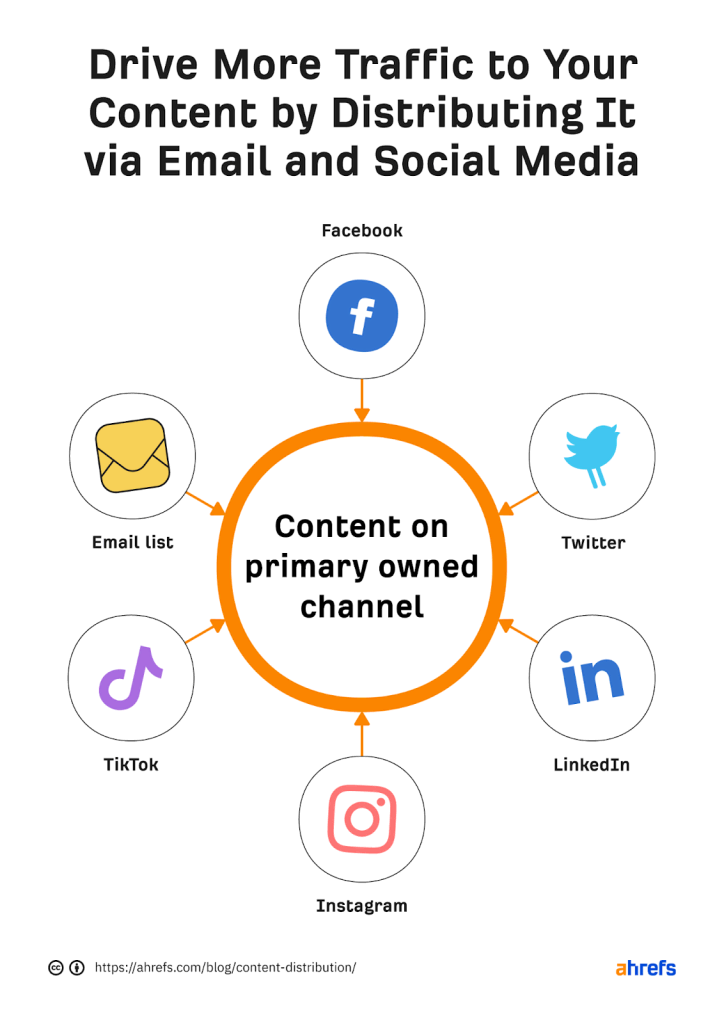
Choosy, choosy. That’s what deciding on the right option is all about. You must determine if you will feed an audience hungry for your content or just give them the dish you’ve already made in front of their faces. Say you want to start a blog for your business, and your goal should be to create something that directly comes from you, not some automatic feed from RSS or social media.
This is why RSS feeds were created so that people can share their most recent blog posts. Sharing information as a company might mean sharing your mission statement or profile.
Social media is excellent at serving an audience, such as giving tips on handling demanding customers or pictures of your favourite vacation spot.
The email could be a more casual form of content distribution by sending links to new products. Aside from that, you could also use it to send periodic content like newsletters so your followers have access to a constant flow of news.
When starting a blog, pick just one form of content distribution that is most vital to you because trying to take on multiple will save time. For example, RSS would be the best choice if you want your content to come directly from yourself.
But say you’d instead make stuff related to the audience, and then social media would probably be better. And hey, maybe email could bring occasional casual updates.
Start Your Email List Right Away!

Every blogger must create an email list when they start writing consistently. Your blog is your business. It doesn’t matter how many followers you have, who you follow or where your traffic comes from. Your brand is something that you own.
You created a product to serve others: your content. When building a blog, consistently producing valuable content is vital. This means that you should always consider providing value to your audience.
Offering discounts or special deals will help attract people and build your email list. People love discounts and special offers, so include them in newsletters, promotions and giveaways.
However, the main benefit of having an email list is that it gives you more control over your business. The more subscribers you have, the more control you’ll have over your business.
For example, when readers become brand ambassadors and spread the word about you and your blog, this will give you more opportunities to interact with them and gain more followers while also acting as a survey for what interests your current readers have.
You are building out an email list early on so that you can lay down the foundation for your blog. As time passes, the number of emails, promotional emails, and relevant content sent to them will only grow, and services/products sold will be more accessible because these customers trust what they're getting into.
Quality Beats Quantity
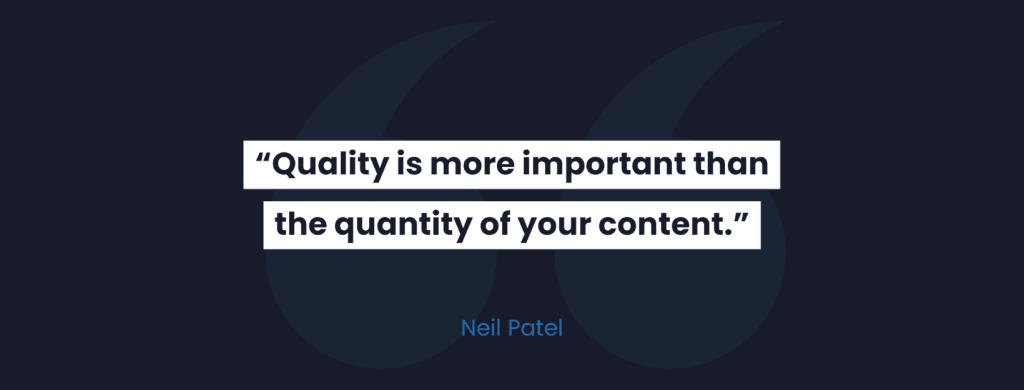
Quality matters — and it’s no different when you’re a blogger. When people first see your content online, they’ll read the words that make up your blog and articles. And from there, they decide whether to stick around or leave immediately.
Think about it; people also look for quality in real-life relationships. You might ask someone about their interests or dislikes when you meet someone new. People are trying to quickly determine if the other person is worth getting to know better.
People assume that you know what you’re talking about when they read your posts and articles. They WANT to trust you… so can they? It doesn’t matter if you’ve been blogging for years or just started yesterday — always give your best shot at providing quality content on your blog.
An added benefit of solid content is that people will share it with others, leading to more readers visiting your blog. This allows you to get readers subscribed to your email list easier than ever before.
Another reason quality is essential in blogging is that people search for it when looking into a business. If viewers see that your blogs lack relevance or contain many mistakes…they won't stay long. Instead, they’ll leave and never come back — I guarantee it!
Your blog's value directly correlates with how well-written and easy-to-read each post is… So, let’s avoid any disastrous situations by starting with a high-quality theme for your website design (you won’t regret it!). Once we've got that part out of the way, we'll worry about ensuring everything looks good and flows smoothly while ensuring each article is written superbly!
Find Your Voice!

It’s lovely to hear that you’re interested in starting a blog! It can be a lot of fun and quite challenging. I look forward to hearing more about it and the contents you plan to share.
Consider what topics or niches you want to write about when finding your voice. This is one of the first steps to start a blog. It would be fantastic to know what you want to write about! You have already laid down the groundwork for yourself. But if not, this is still an excellent question for those considering a new blog.
Knowing what to focus on is critical; there isn’t one correct answer about what people should blog about. Start with something that excites you most and you believe has the most value in sharing your thoughts/opinions on various issues. From there, look around and read other bloggers’ stuff to see if there’s anything useful they talk about.
If you need help deciding what topics work best for your blog, consider writing posts on different ones before settling. If travelling excites you and taking people along your journeys interests you, go ahead and write about the best places in the world worth visiting. Or if food makes you happy, why not research which restaurants in your region or city are worth checking out?
What Should I Write About?
When it comes to blogging, writers come in all different shapes and sizes. On one end of the spectrum are professional bloggers who use their writing as a source of income. These bloggers treat their craft with the same seriousness as any other job, but that takes time. On the other hand, some people write just for fun. These kinds of bloggers will only want to put in a little bit of effort.
It’s no secret that writing is hard work and can be time-consuming. That said, if you’re not planning on becoming a full-time blogger, you’ll have to make room for it elsewhere in your schedule. However, if starting a blog is part of your overall plan to make money from home or be a full-time writer, there’s no way around it – you’ll need to invest some serious hours into your skills.
Before you start publishing content onto your website and sharing it through social media platforms like TikTok and Facebook Ads Manager, take some time to sit down and figure out what exactly you hope to do with this blog. Knowing where you want to end up will dictate how much effort and resources you should put into the beginning stages.
The old saying “practice makes perfect” couldn’t be more true when learning something new. Like anything else, if you don’t apply yourself from day one, you’ll never master it.
In closing, here are three questions that I think anyone considering starting a blog should ask themselves:
- Do they have enough free time in their schedule?
- Are they willing to learn everything required about blogging?
- Are they willing to learn how to write?
Video Is a Huge Opportunity
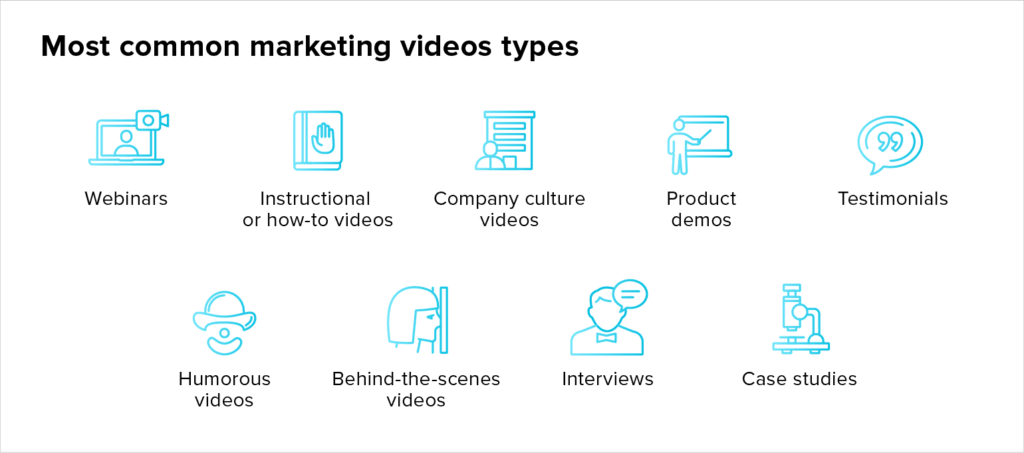
When I first started blogging, I was sceptical about video. It seemed like another thing that would take too much time and distract me from my writing. But, as time passes, I see just how big of an opportunity it is.
It’s a personal way for readers to get to know me and see a slice of my life and authentically who I am.
It’s also a great tool to interact with your readers and connect with them. If you give them an inside look at your life, they’ll come to know you, and you’ll build trust.
The most significant opportunity is that it allows me to share something special with people. I can share where I’ve been, where I am now, and where I’m going on this life journey. And that’s powerful.
You can use video to help build your blog in so many ways. Here are some tips for getting started:
Build trust
A few years ago, my friend Kelly and I decided to start a food blog together. We had been cooking together for years but never posted anything online.
We wanted to do recipes and connect with the readers but didn’t have any content.
We didn’t even have a website yet, so we knew our first step would be making a video that could help us get one.
Our goal was to make it short and fun while still showing what we cooked, how we cooked it, and what our life was like. We hoped this would show people we were honest and that our stories were worth hearing.
We filmed ourselves cooking simple meals using a microphone while telling our stories. Then, when editing the video, we added music behind us, talking on top of our voices and recording over each other, which made it sound more professional than it was.
Once uploaded onto YouTube, we saw it had been watched over 5k times after one day! Our story got picked up by the local news, and we received thousands of comments saying they liked that we told our story.
It resonated so much with people because it was authentic. I still watch the video today and see how many people relate to it, which helps me remember my path.
We built trust with our audience by showing a little piece of ourselves. That’s what people crave, and that’s what they’ll respond to.
Get real
In addition to building trust, video is essential to get real. Share your story!
Everyone has a unique story, but only some are willing to share it. People want something they can relate to, and you won’t be able to connect with them if you’re just another perfect stranger.
What we love about sharing our stories is that WE interact with PEOPLE. We ask questions and help others.
In the video above, I share my process for choosing, cooking, and enjoying food. Connecting with someone who shares their story is more accessible than with an anonymous blogger.
I’m not very good at sharing my story. I have a hard time being genuine and authentic. But when people get a glimpse of me behind this veil of a blog, they seem to like it.
What People Love About My Blog
They can relate to me. Sure, I’m not perfect (in any sense), but I am honest.
The more I share myself, the more people want to know about me. They want to learn about what I do and how I’ve done it.
When I open up more, people reach out more, too. More interview requests come in weekly, with more feedback and new followers on Instagram.
Connecting with People from All Over
One of the best parts about blogging is talking to people worldwide and hearing their stories. Something magical happens when you write and share your stories online.
But if writing isn’t your thing, or maybe you’re just starting… video is a powerful tool for connecting with other humans.
You don’t have to pretend on camera either—just be yourself!
Consider How You Want to Approach Affiliate Income
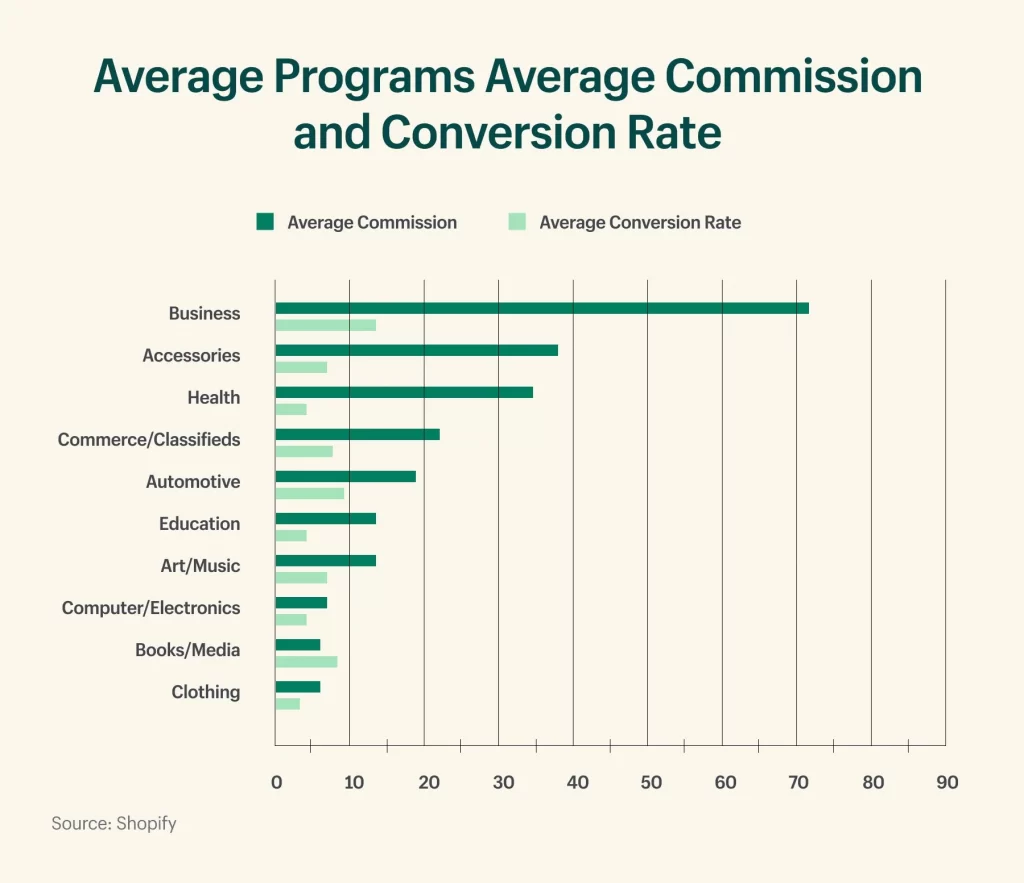
Determining what kind of blogger you want to be is crucial when starting a blog. Do you want to generate passive income or fast cash?
Both methods work differently, but both have their unique opportunities for success.
Passive income focuses on creating a blog that generates revenue through user traffic. This means the owner should set up the site in a way that will attract repeated visits and build brand loyalty over time. Visitors should be enticed enough to pay you through advertising, subscriptions, or whatever other method your website uses. One can expect about $2,000 per month with this kind of affiliate marketing.
Fast Cash is precisely how it sounds. It’s all about selling as much product in as little time as possible. As soon as someone buys something off your site, hit them with an email asking if they’re interested in another product! Then once they buy that one, too… I’m kidding 😂 BUT if they do buy the new one… Ask them if they want to sign up for a free trial or membership! These methods are more aggressive than passive income but require less patient waiting and scale at higher rates. The typical earnings for each sale is $2,000 (no pressure).
There is no guarantee when earning money from your site, so the best thing you can do is keep building and see what happens! You never know who may stumble across your page and decide to support it by purchasing something from it! Fast cash may be the better option if you need some quick money!
Affiliate Income functions differently than most people think, so don’t start spamming links hoping people will buy stuff just yet 😅 This method takes time and effort, but if done right, it will get your blog generating a passive income in no time! To learn more about Affiliate Income models, consider checking out our guide on How Passive vs Fast Cash Models Work!
How to Use Passive Income to Build a Blog
As a blogger, it’s essential to know that passive income doesn't come overnight. It takes work.
Quick money is excellent but doesn’t leave time to create a long-lasting business.
Instead, passive income calls for patience and effort. You’ll have to put in the hours before you earn your first dollar from your blog’s audience.
That’s why you should start your blog with passive income in mind rather than trying to make some quick cash.
You won't be able to make much if that's what you're after.
You'll need to build a community and trust before the money starts rolling in.
On average, bloggers using a passive income model make around $10,000 monthly.
It takes more than just posting a link on social media to get there, though!
That's why you must develop a plan and focus on building an easy-to-scale business.
Wrapping Up
I’m sure you have many ideas for making money online… so do I! But these things can be overwhelming, especially at first.
So, I’ve developed a list of tips and tricks to help you start right.
My favourite activity to do is blogging. It lets me share my knowledge with others. I hope this helps you as well!
Want more blogging information? Check out this article!
FAQs on Starting a Blog
What’s the first step in starting a profitable blog?
The initial step is to select a niche or topic that you’re passionate about and that other people are interested in. This way, you can create content that readers find valuable.
How do I choose a domain name for my blog?
Choose one that is short, easy to remember, and relevant to your blog’s theme. Avoid using special characters or numbers if you can help it. Also, check if the name is accessible on popular social media platforms.
What blogging platform should I use?
WordPress.org is one of the most flexible options and allows for complete customisation. However, Wix or Blogger might be easier to learn and work with if you're new to blogging.
How often should I post new content?
Consistency is key here. Most successful bloggers publish at least once per week (if not more). Having a regular publishing schedule helps build a loyal readership.
How do I drive traffic to my new blog?
Utilise search engine optimisation (SEO) tactics, promote on social media platforms like Facebook or X, guest post on other blogs in your niche, interact with your audience through comments and emails and consider paid advertising when you start generating revenue.
What are some ways I can monetise a blog?
Affiliate marketing, sponsored posts from companies within your niche, selling digital products like ebooks or courses, display advertising through Google AdSense or Mediavine, offering member subscriptions or exclusive content are all common methods worth considering.
How long does it take to start making money blogging?
Typically, 6-12 months of consistent effort before you see any income from your site. However, the rate at which you earn money will vary depending on your niche choice and strategy execution. So, don’t expect rapid growth right off the bat.
Do I need to be an expert writer to make it as a blogger?
Not necessarily! While excellent writing chops are undoubtedly a plus, they are not required from the start. With practice and by providing value to your readers, your writing will improve over time.
How much money can top bloggers make?
Full-time professional bloggers can rake in anywhere from $20k to several million dollars annually. The amount of money you’ll make depends on traffic levels, revenue streams, and business acumen. However, most bloggers earn more modest side incomes.
What are some tips for staying motivated as a blogger?
Set realistic goals for yourself that you can work towards. Also, find someone to hold you accountable along the way. Track critical metrics to know your progress at any given time, too. Engage with your audience through comments and social media posts as well. And always remind yourself why you started so you don’t lose sight of your original vision.
